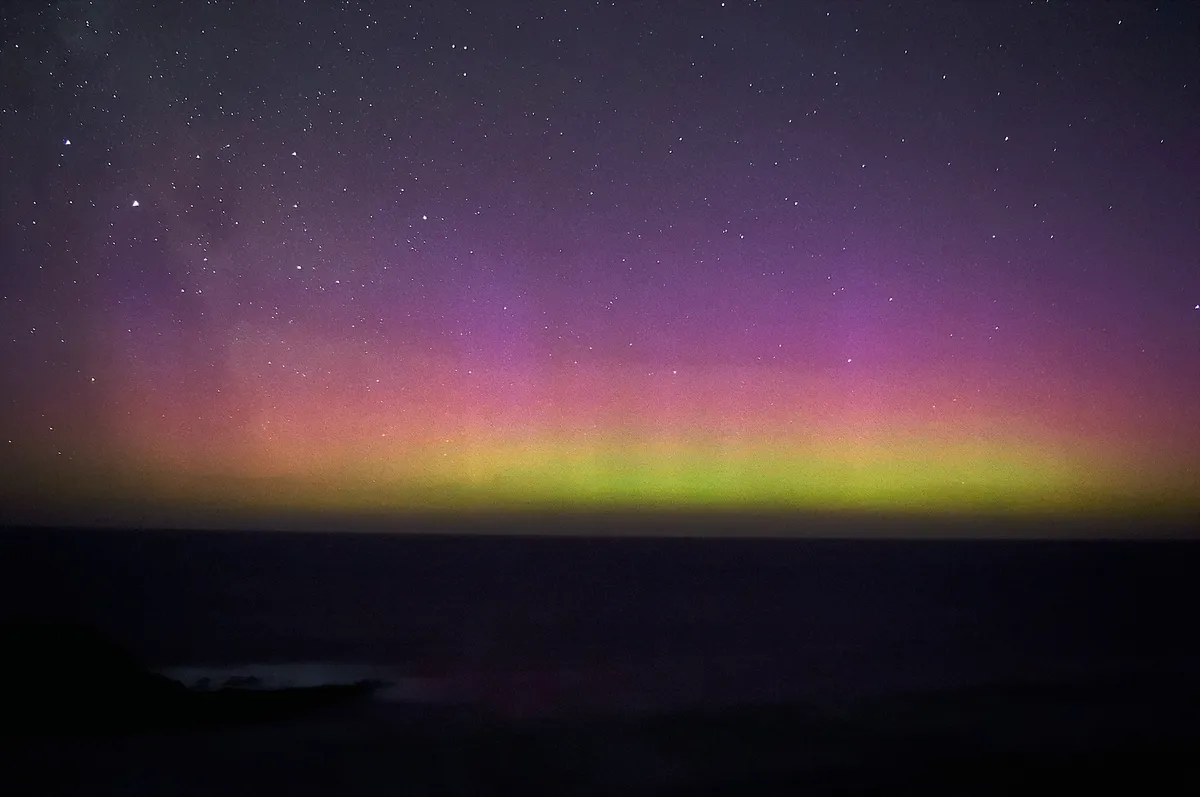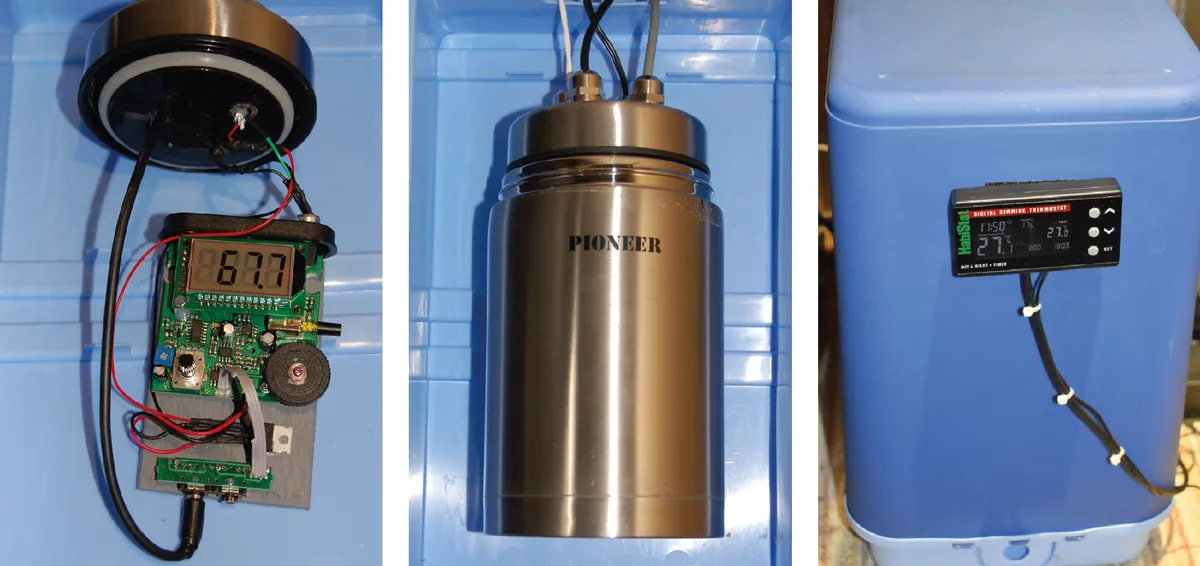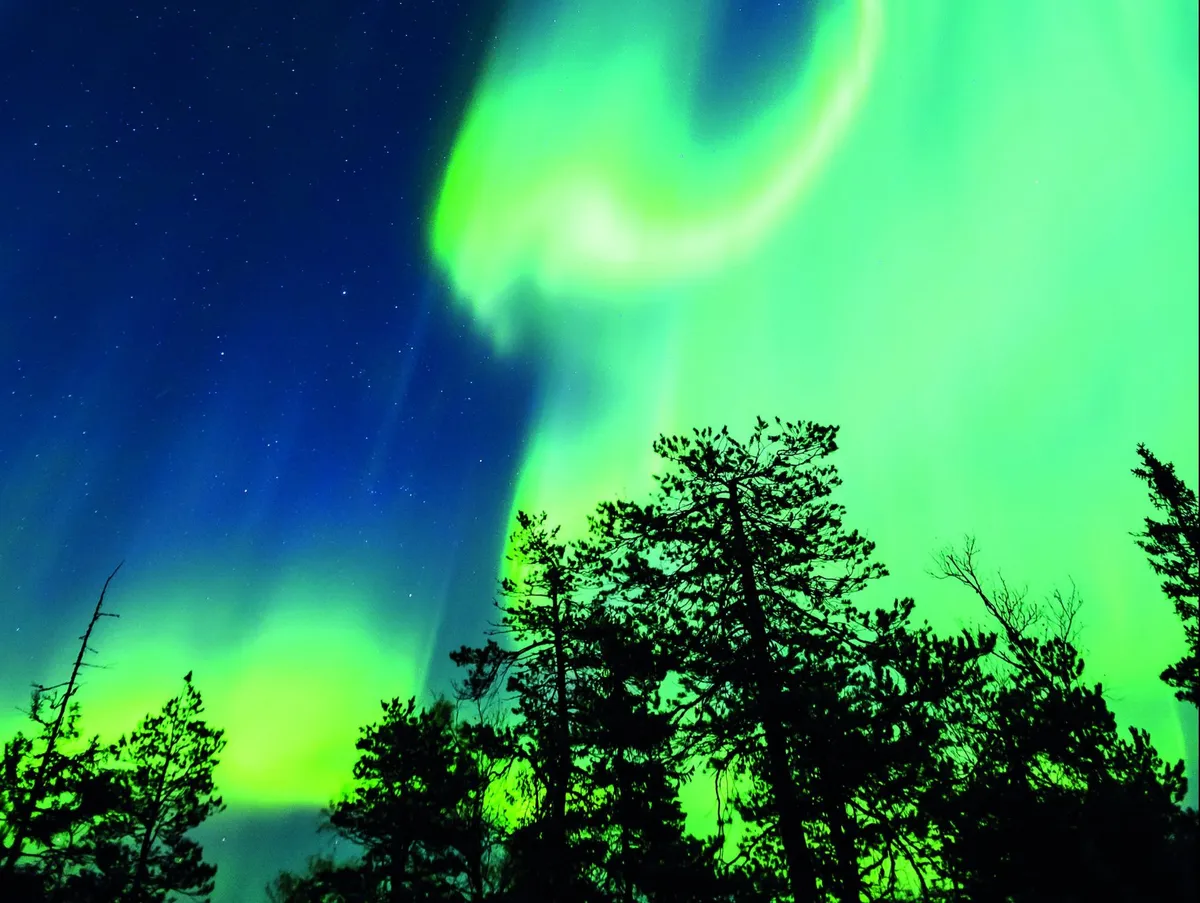Earth is bathed in a stream of energetic particles emanating the Sun. This solar wind ebbs and flows, occasionally exploding in a coronal mass ejection, throwing billions of tonnes of plasma into space, which impacts on Earth’s magnetosphere.
The result is bright and beautiful aurorae, the luminous splendour of which is our only visual confirmation of this Earth-Sun connection.
I had been looking for a way to establish connectivity with the Sun otherwise unavailable in my lower latitude location in the UK.That’s when I thought about building a magnetometer.

Not only does the solar wind create the aurora, but in the process of being deflected by our protective magnetosphere, it also imprints its signature upon our protective bubble.
This is detectable at any point on our planet with a magnetometer, which picks up the magnetic signature as it fluctuates according to the strength, speed and magnetic orientation of the passing plasma.
Magnetometers can be purchased commercially, but my interest lay in building one.

The basic scheme of the design is a highly sensitive magnetic sensor, an ultrasonic emitter, an ultrasonic-to-audio frequency converter and a computer with a sound card and Spectrum Lab audio spectrum analysis software for data logging.
At the heart of this setup is the magnetic sensor. Called a fluxgate, these sensors can be extremely sensitive and are perfectly suited to measuring the tiny perturbations in the local magnetic field caused by space weather.
The sensor I used provides an output frequency that varies according to the strength of the magnetic field.
- Visiting Swedish Lapland for the Northern Lights
- How do you take photographs of the aurora?
- Best readers' images of the aurora
As well as responding to the magnetic field, the output frequency also changes with temperature, so the sensor has to be located in a temperature-stable environment.
My sensor is buried in my garden about 0.5m below the surface. It is also protected by a waterproof housing made from 40mm diameter plumbing pipe fitted with end caps sealed using suitable solvent.
The sensor is positioned almost perfectly level on a poured concrete base and points along Earth’s magnetic east-west direction.
It’s also sited away from any stray magnetic fields that might be created by local electric cables and equipment.
The fluxgate sensor’s power supply also has to be stable to avoid spurious readings, so mine is linked to a linear voltage regulator that converts 9V DC from a mains transformer to a stable 5V DC supply.

When pointing east-west, the output from the fluxgate sensor is a train of +5V square wave pulses at a frequency in the range of 60-70kHz, which is significantly above the operating frequency of any standard computer sound card.
So I turned to equipment intended for zoology and connected the output of the magnetic sensor to a bat detector with an ultrasonic transducer emitter.
Bat detectors are designed to convert ultrasonic bat calls into audio frequencies that we can hear.
Commonly this is accomplished by a process called heterodyning, in which an internally generated, tuneable reference frequency is mixed with the varying ultrasonic input signal from the bat to create audible sound at a frequency equal to the difference between input and reference frequencies.
For the purposes of magnetometry, this frequency difference should be tuned to a single audible tone that can be recorded with a standard computer sound card.
I found 3-4kHz to be a suitable range. The other advantage of using a bat detector is that the audio output is of good fidelity, meaning that subsequent data analysis can be accomplished at high resolution.
I used a detector with an internal crystal oscillator for precision and to minimise any frequency drift.
This detector is usually powered by a set of batteries, but as that only provided a battery life of less than 24hrs, the batteries were swapped for another stabilised DC feed from the 9V mains transformer.
Having established my magnetometer I have a connection with the cosmos; data streaming into my PC, capturing the ebb and flow of the solar wind and coronal mass ejections that buffet our planet.
With the detector set up I was ready to log data, and for this I used free software called Spectrum Lab, written by Wolfgang Buescher.
This enables the data stream to be displayed as a continuous chart as the day progresses.
The software can also send measured frequency data to a computer hard drive at preselected intervals, together with a time and date stamp, building up a database throughout an entire geomagnetic event.
Later, this database can be exported as a CSV file and copied into an Excel spreadsheet for further analysis.
Any time period between logged events can be selected; I use a one-second cadence for high resolution work and a 150-second cadence for standard resolution work.
Analysing the data involves converting frequency to magnetic field strength (more accurately magnetic flux density in nano-Tesla) using conversion factors provided by the sensor manufacturer, and then charting the result as a function of time.
As it turned out, my magnetometer needed a few refinements to make it more consistent with professional data, in particular better temperature control of the bat detector.
The output from the detector was being significantly impacted by small ambient temperature fluctuations that were imprinting on the output frequency.

It was only when the detector was placed in a temperature-defined environment (inside a vacuum flask, inside a cool box fitted with a vivarium heater mat at a controlled temperature) that the output met the professional readings.
The output from such a relatively simple device is remarkably consistent with data generated by professional geomagnetic monitoring stations such as Eskdalemuir, operated by the British Geological Survey, and its sensitivity and resolution certainly compete favourably for the hobbyist with the output from magnetometers costing considerably more.
Having established my homemade magnetometer I now have that connection with the cosmos that I was looking for, with data streaming into my PC constantly, capturing the ebb and flow of the solar wind and occasional coronal mass ejection that buffets our planet.
The sound of space weather
Once the data from the solar wind hitting Earth’s magnetosphere has been collected, it’s possible to create an audio file from it
Taking things a step further with an online algorithm, it’s possible to convert the output magnetic field strength data into sounds using the MIDI (Musical Instrument Digital Interface) protocol.
In this process, each field strength value is converted to a MIDI value representing a particular musical note, which is then fed into music production software to prepare an audio track.
MIDI allows any digitised instrument to be assigned to play the note, although my preference is to use a synthesised wind sound to represent the solar wind.
In reality, the data relate directly to local magnetism, not to the solar wind, yet to hear the sounds generated by such a method is evocative as one imagines the stream of particles pushing against our protective magnetic field, occasionally entering to create the ethereal aurora.
Once the magnetic declination data generated by my magnetometer was sonified, it could be synchronised with a timelapse video of the aurora borealis to create an audio-visual experience similar to this one:
The correlation between the video, created by Kai-Maeius Pederson in Tromsø, Norway, and the audio is not perfect – probably because of the physical separation between it at the sound recording in the UK – but there is a satisfying degree nevertheless.
This article originally appeared in the March 2018 issue of BBC Sky at Night Magazine. Stuart Green is a solar astrophotographer. See more of his work at his Flickr page.